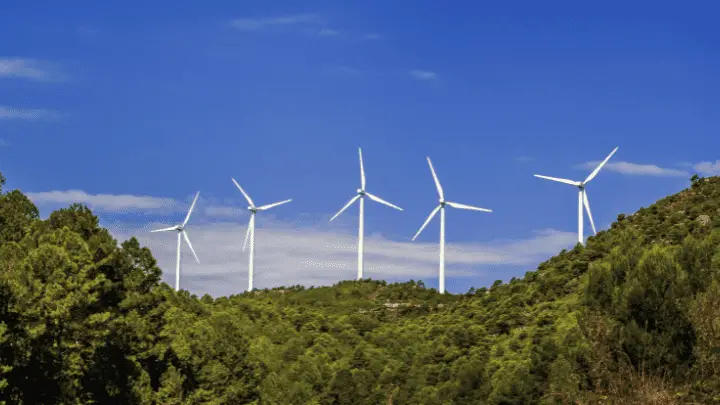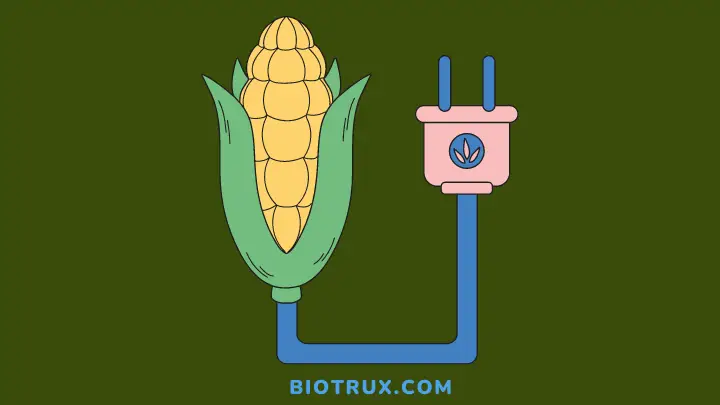As the world’s population grows and our energy needs increase, exploring alternative energy sources is becoming increasingly critical.
Alternative energy sources, also known as renewable energy sources, are a potential solution to our dependence on fossil fuels. These fuels contribute to environmental problems.
In this article, you’ll explore different alternative energy sources, their benefits and drawbacks, and how they are used today. Let’s get started.
What Are Alternative Energy Sources?
Alternative energy sources refer to those sources of energy that are sustainable and renewable. Unlike traditional energy sources such as coal, oil, and gas, alternative energy sources are derived from natural resources that do not harm the environment.
Examples of alternative energy sources include solar, wind, hydropower, geothermal, and biomass. Due to the growing energy demand and the need to reduce greenhouse gas emissions, alternative energy sources have become increasingly popular.
These sources are sustainable and have lower operating costs than traditional energy sources.
So, if you’re interested in helping to create a sustainable future and protecting our planet, alternative energy sources are something to be excited about.
Examples of Alternative Energy Sources
1. Solar energy: the power of the sun

Solar energy is one of the most common alternative energy sources that is becoming increasingly popular worldwide. It uses solar panels to collect energy from the sun and turn it into electricity.
The way it works is pretty amazing – the panels absorb sunlight, which then creates a direct current of electricity. This electricity flows through an inverter, which turns it into an alternating current, making it usable for homes and businesses.
Pros
- Solar energy is a renewable resource that will never run out.
- It is eco-friendly and does not harm the environment or contribute to climate change.
- It can save people money on their electricity bills in the long run.
Cons
- Solar batteries and panels can be expensive to install.
- Solar energy depends on weather conditions, such as cloud cover and sunlight available.
Despite these concerns, solar energy is being used in many ways today. For example, many homes and businesses install solar panels to produce electricity. There are also large-scale solar farms that can power entire communities.
Some companies are even experimenting with using solar energy to power transportation, such as electric cars.
2. Wind energy: The power of wind

Wind energy is an increasingly popular alternative energy source that harnesses the power of the wind to generate electricity.
This is done through wind turbines, which convert the wind’s kinetic energy into electrical energy. When the blades of a wind turbine spin, they turn a generator that produces electricity.
Pros
- Wind energy is a clean and renewable energy source that does not produce greenhouse gases or contribute to air pollution.
- It is a cost-effective way to produce electricity once the turbines are installed.
- Wind turbines can be easily installed in rural or remote locations. They provide power to areas that may not have access to traditional power sources.
Cons
- Wind energy production is dependent on the wind, which can be unpredictable and inconsistent
- Wind turbines can harm local wildlife and habitats
- The large size and noise of wind turbines can also concern nearby residents.
An example of how wind energy is being used today is in the Renewables Obligation scheme in the United Kingdom.
This policy requires energy suppliers to source some of their electricity from renewable sources such as wind energy. The scheme has successfully promoted wind energy production and reduced carbon emissions.
3. Hydroelectric energy: The power of water

Hydroelectric energy is a renewable energy source that converts the energy of flowing or falling water into electricity.
This process involves using a dam to create a reservoir of water released through turbines to generate electricity. The energy generated depends on the amount of water flow and the dam’s height.
Pros
- A clean energy source that does not produce greenhouse gases.
- Hydroelectric power plants can control flooding by regulating the flow of water.
- Hydroelectric energy can be produced on a large or small scale. Hence, it is a flexible and effective option for meeting energy needs.
Cons
- Constructing dams and hydroelectric power plants can have negative environmental impacts such as habitat destruction and alteration of water flow.
- Can be affected by droughts and changes in weather patterns.
- Hydroelectric power generation can also result in the displacement of people who live in the surrounding areas.
One example of hydroelectric energy being used today is the Three Gorges Dam in China, one of the world’s largest hydroelectric power plants. The dam provides electricity to millions of people in China and is used for flood control and navigation on the Yangtze River.
There is also tidal energy, which harnesses ocean tide energy to generate electricity. Tidal power plants use turbines to convert tide kinetic energy into electrical energy.
Tidal energy is still in its early stages of development, but it can potentially become a significant energy source in the future.
4. Geothermal energy: The power of the earth

Geothermal energy is one of the most promising alternative energy sources being explored today.
This type of energy relies on the natural heat generated from deep within the Earth’s core. Essentially, geothermal energy works by tapping into this heat and converting it into usable energy.
Pros
- It is a renewable and sustainable energy source that will never run out or deplete if managed properly.
- It produces very little pollution compared to other traditional forms of energy, such as coal or gasoline.
- It is reliable and consistent, as the Earth’s heat is always present.
Cons
- It can only be generated in specific locations where the Earth’s crust is relatively thin and hot, limiting its widespread use.
- The drilling and digging required to access geothermal energy can be expensive and time-consuming.
- There are concerns about the potential for earthquakes and other geological disruptions caused by geothermal drilling.
One example of geothermal energy used today is at the Oregon Institute of Technology. They have built a geothermal power plant that supplies energy to the campus and surrounding areas.
Overall, geothermal energy shows great promise as a renewable and sustainable energy source for the future.
5. Biomass energy: The power of organic matter

Biomass energy is an alternative energy source that converts organic materials, such as wood chips, corn, or animal waste, into fuel. This is accomplished through a process called combustion, which produces heat and steam that can be used to generate electricity.
Pros
- Renewable and less reliant on fossil fuels.
- It can reduce waste and greenhouse gas emissions.
- It supports local economies and promotes sustainable farming practices.
Cons
- Quite costly to produce and transport.
- Can have negative environmental impacts if not managed properly.
- May not be a feasible solution for all regions or energy needs.
One example of how biomass energy is being used today is in the production of biofuels. Biofuels, such as ethanol and biodiesel, are made from crops like corn and soybeans and can be used as a substitute for gasoline and diesel fuel.
Despite some drawbacks, biomass energy has shown the potential to contribute to a more sustainable and diversified energy mix.
Is Nuclear Energy an Alternative Energy Source?
Yes. Nuclear energy can be considered an alternative energy source because it offers a viable solution to reduce carbon emissions and dependence on fossil fuels.
Unlike renewable energy sources such as solar or wind power, nuclear energy can provide a consistent and reliable source of electricity. However, it comes with challenges, including safety concerns and radioactive waste disposal.
While nuclear energy does not produce greenhouse gas emissions, it is not considered a renewable energy source. This is because nuclear energy is generated through nuclear fission, which involves splitting atoms of uranium or plutonium.
These elements are non-renewable resources that must be mined from the earth and eventually will become depleted. Additionally, nuclear waste can remain radioactive for thousands of years and must be carefully stored to prevent harm to people and the environment.
Nuclear energy is not considered sustainable in the long run despite its efficiency and ability to produce large amounts of power.
FAQs
How can we overcome the challenges facing alternative energy sources?
Governments and private entities can invest in research and development and provide subsidies and incentives for alternative energy sources. They can also collaborate with stakeholders in traditional energy industries to find common ground.
Can alternative energy sources meet the world’s energy demands?
Yes, with proper investment and development, alternative energy sources have the potential to meet the world’s energy demands in the future.
Why are alternative energy sources called green energy?
Alternative energy sources are called green energy because they produce power with little or no negative environmental impact. Green energy sources do not deplete natural resources or cause harm to the environment, which is why they are considered environmentally friendly
Which alternative energy source is the best?
Alternative energy sources are often called “green energy” due to their minimal impact on the environment and ability to help reduce carbon emissions. The term “green” signifies sustainability and environmental friendliness.
Final Thoughts
In conclusion, alternative energy sources bring promise regarding environmental sustainability and economic benefits. As we have seen, wind, solar, hydroelectric, geothermal, and biomass energy are just some alternatives we can tap into to reduce our reliance on fossil fuels.
Each of these energy sources has its own set of pros and cons. Despite the challenges and limitations of alternative energy sources, the potential benefits cannot be ignored.
The shift towards alternative energy resources is not only necessary for the health of our planet but for our well-being as well. With the right policies and investments, we can create sustainable energy systems that benefit everyone.
You can also learn more about why natural resources are important for businesses.
Thanks for reading.

